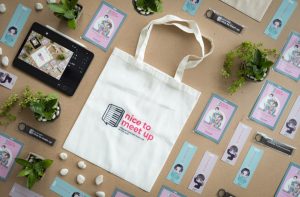When looking to increase the appearance of their items, many look to foiling. The potential for improvement here is considerable. Sometimes, people aren’t satisfied with regular foils though. Instead, they want more environmentally friendly solutions. Luckily, we have the best sustainable foil options in the world.
People regularly ask for advice on what branding method to use for corporate gifts. Two solutions they tend to need help with are foil blocking and embossing. You can brand many of the same objects using both methods. If you’re not informed on them, it can be a tough choice. We’re going to help by discussing the differences between them.
Embossing
This is a process by which a logo or pattern is raised from the exterior of a material. What you create here is a 3-D design with texture. Debossing is the opposite; it’s a pattern pressed into the surface of a material.
You can use both techniques on leather, faux leather, metal, and paper. In many cases, people use embossing as an all encompassing term when referring to both practices. Depending on what material you are embossing, you’d use differing methods. Most depend on pressure and heat to guarantee precision.
Blind embossing is when the process doesn’t come with the use of foil or ink to highlight the embossed area. Thus, the relief of the surface is the sole distinction between non-embossed and embossed areas.
Foil blocking
 This is an alternative branding method. It consists of stamping foils, including sustainable foil, onto an exterior to create a foil design. In this procedure, you use heated metal blocks to move a thin layer of foil onto the material. You don’t use ink. So, it is unique from other branding techniques.
This is an alternative branding method. It consists of stamping foils, including sustainable foil, onto an exterior to create a foil design. In this procedure, you use heated metal blocks to move a thin layer of foil onto the material. You don’t use ink. So, it is unique from other branding techniques.
Foil blocking tends to be popular on materials like leather, faux leather, and paper or card stocks. You can frequently see it on objects like notepads and diaries. It is possible to brand plastic with this method too.
Silver and gold foils are the most common choices. However, other matte and metallic colours are available as well, like red and copper. Sustainable foils are another option too.
Different uses
As for when to use the two, embossing is typically best for subtle branding. This is because it doesn’t utilise dyes or colours. Use it if you want your logo to be understated. Also use it if you’re an established/heritage brand that’s after a sophisticated brand image. You can use it if you want promotional items to have high perceived-value too.
For foil blocking, use it if you’re a new or modern brand looking to separate yourself from everyone else. It is also useful if you want your logo to be highly visible, shiny, and bright. Furthermore, you can use it if you’re branding a smooth, flat exterior. Keep in mind though that it can appear unclear on textured surfaces.
Environmental goals
There is also another reason why you should use foil blocking; it can help you meet your environmental goals, especially if you choose sustainable foil.
A more sustainable approach to doing things is a priority for many people today. In fact, it is one of the most important factors with younger generations. Solutions like foiling provide a way to obtain the impressive aesthetics without compromising sustainability needs.
The key element to note here is the material, that being the foil. It is recyclable. As such, any kind of foil blocking you use will be environmentally friendly. In fact, newer foils even have films that are recyclable too.
The best sustainable foil for your projects
At Foiling Services, we know that foils have what it takes to deliver spectacular results. They can be perfect for all kinds of brands, including any looking for an elegant look.
We work with clients to ensure they get the best solutions. We’ll even offer sustainable foil to provide greener options. So, please let us know if we can help you with anything.
